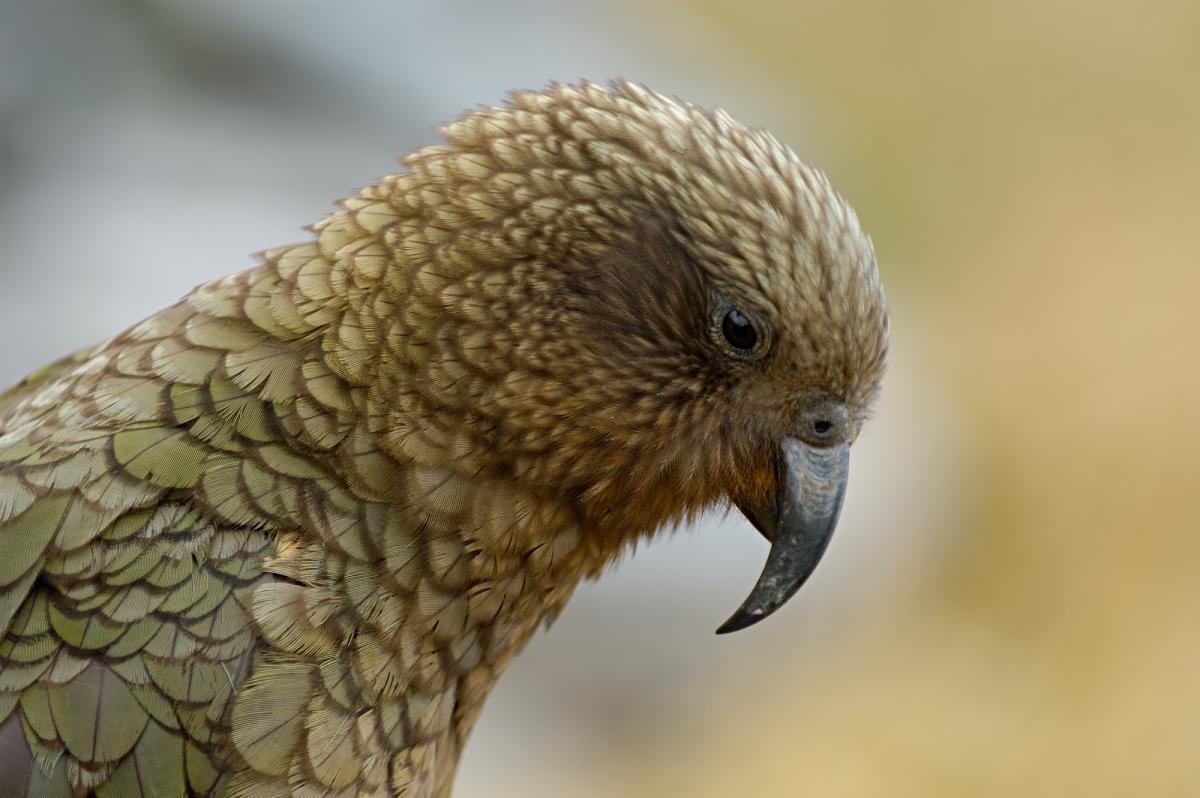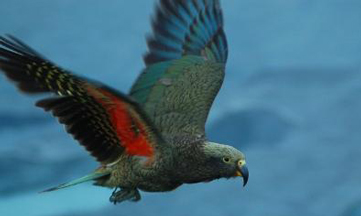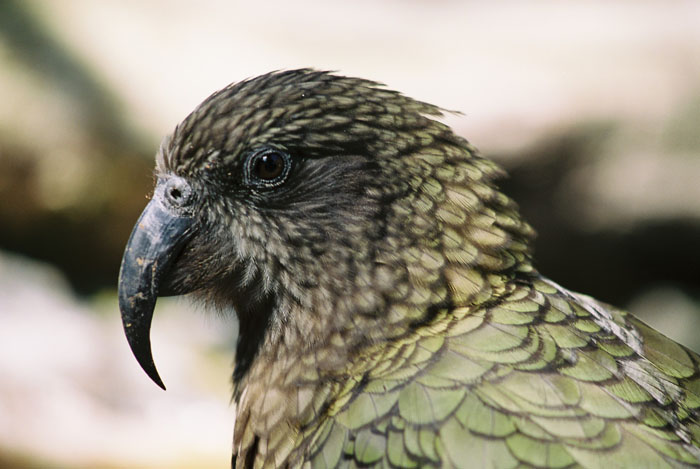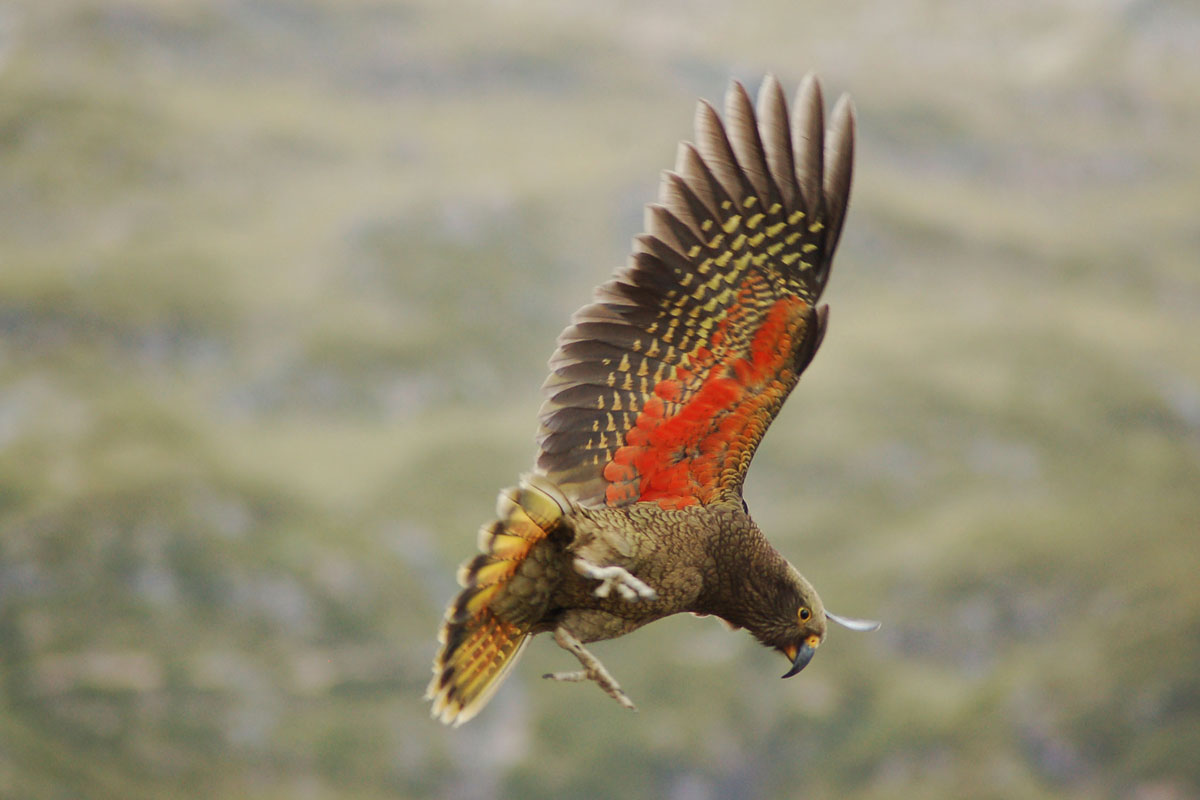
Nestor notabilis
SUBFAMILY
Psittacinae
TAXONOMY
Nestor notabilis Gould, 1856, South Island, New Zealand.
Monotypic.
OTHER COMMON NAMES
French: Nestor Kйa; German: Kea; Spanish: Kea.
PHYSICAL CHARACTERISTICS
15 in (38 cm); 1.2–1.9 lb (600–960 g). Large bird with dull
brown plumage; long, pointed bill.
DISTRIBUTION
South Island, New Zealand.
HABITAT
Mountains; steep-sided wooded valleys and Nothofagus forest
bordering subalpine scrublands, seasonally visiting scrublands
and alpine grasslands; occurs commonly in and around human
HABITAT
ion, notably at ski lodges, tourist hotels, and camping
grounds.
BEHAVIOR
Resident, with local altitudinal movements for seasonally available
foods; juveniles more mobile than adults; strong fliers,
noisy, conspicuous flocks often circling high above mountain
valleys, especially in strong winds preceding storm. Tame and
highly inquisitive around human habitation, sometimes causing
damage to parked cars and tents or cabins when searching for
food scraps; attracted to refuse tips and rubbish receptacles, often
spilling contents; playful, enjoying rolling in snow or bathing
in recently thawed puddles; in summer, regularly active at night.
FEEDING ECOLOGY AND DIET
Forages in trees or shrubs and on the ground; varied diet includes
leaf buds, roots, berries, fruits, seeds, blossoms, nectar,
and insects. Favored foods include Podocarpus and Coprosma
fruits and nectar from mountain flax Phormium colensoi; comes
to sheep carcasses or drying skins to feed on fat or decaying
flesh and to extract marrow from bones; possibly attacks defenseless,
weak, or sick sheep; regularly scavenges for food
scraps in refuse tips or rubbish receptacles.
REPRODUCTIVE BIOLOGY
Breeds mainly July–December, but recorded at other times.
Monogamous and apparently at times polygynous; solitary
pairs faithful to traditional nest-sites established over number
of years and reused annually; also record of one dominant male
attached to up to four females. Breeding birds seldom move far
from nest-site throughout the year, but not strongly territorial.
Nest in crevice under rocks, among roots or trees, or in log lying
on the ground; clutch two to four eggs incubated by female
for 21–28 days; chicks leave nest some 13 weeks after hatching.
CONSERVATION STATUS
Vulnerable. Formerly persecuted because of alleged killing of
sheep, causing decline in numbers and fragmentation of population;
now fully protected. In 1990s estimates of total population
highly variable, between 1,000 and 5,000 or up to 15,000,
with concentrations around human habitation possibly giving
false counts. Listed on CITES Appendix II.
SIGNIFICANCE TO HUMANS
For more than a century persecuted as killer of sheep and, despite
little supporting evidence, bounty paid to farmers; almost
7,000 birds killed in three years, 1943–46. Now fully protected
and, although responsible for damage to vehicles and property,
birds popular with tourists because of tameness.
Other popular Animals
Photo Gallery of - Kea




 Animalia Life
Animalia Life